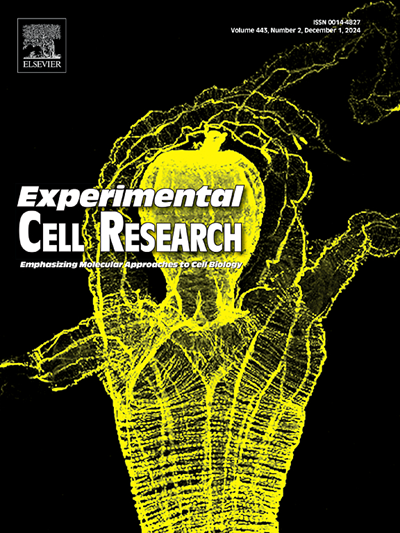单细胞测序揭示压力性尿失禁女性阴道前壁细胞外基质和免疫微环境的异质性
IF 3.3
3区 生物学
Q3 CELL BIOLOGY
引用次数: 0
摘要
压力性尿失禁(SUI)的特点是在腹压增加时出现不自主漏尿,但人们对其病理生理学和治疗方法的了解仍然很少。在这项研究中,我们利用单细胞测序技术分析了 SUI 患者阴道前壁不同类型细胞的转录组图谱,旨在探索细胞外基质(ECM)和免疫微环境在 SUI 发病机制中的异质性。我们的研究结果发现了 11 种细胞类型,包括结缔组织细胞、免疫细胞和神经胶质细胞。具体来说,成纤维细胞、平滑肌细胞、上皮细胞和 T 细胞显示出与 SUI 发病机制高度相关的转录特征。我们观察到,大多数细胞类型都参与了 ECM 代谢和免疫炎症反应,这表明多种阴道细胞类型在 SUI 中发挥着协同作用。此外,我们还注意到 SUI 中细胞间通信的改变,尤其是成纤维细胞和 T 细胞之间的通信。这项研究提供了有关 SUI 的单细胞新见解,并为未来研究确定了潜在的生物标记物和治疗目标。本文章由计算机程序翻译,如有差异,请以英文原文为准。
Heterogeneity in extracellular matrix and immune microenvironment of anterior vaginal wall revealed by single-cell sequencing in women with stress urinary incontinence
Stress urinary incontinence (SUI), characterized by involuntary urine leakage during increased abdominal pressure, remains poorly understood regarding its pathophysiology and treatment. In this study, we utilized single-cell sequencing to analyze the transcriptomic profiles of different cell types in anterior vaginal wall of SUI patients, aiming to explore the heterogeneity of the extracellular matrix (ECM) and immune microenvironment in SUI pathogenesis. Our results identified eleven cell types, including connective tissue cells, immune cells, and glial cells. Specifically, fibroblasts, smooth muscle cells, epithelial cells and T cells displayed transcriptional characteristics highly relevant to SUI pathogenesis. We observed that most cell types participate in ECM metabolism and immune-inflammatory responses, indicating a synergistic role of multiple vaginal cell types in SUI. Furthermore, altered intercellular communication, particularly between fibroblasts and T cells, was noted in SUI. This study provides novel single-cell insights into SUI and identifies potential biomarkers and therapeutic targets for future research.
求助全文
通过发布文献求助,成功后即可免费获取论文全文。
去求助
来源期刊

Experimental cell research
医学-细胞生物学
CiteScore
7.20
自引率
0.00%
发文量
295
审稿时长
30 days
期刊介绍:
Our scope includes but is not limited to areas such as: Chromosome biology; Chromatin and epigenetics; DNA repair; Gene regulation; Nuclear import-export; RNA processing; Non-coding RNAs; Organelle biology; The cytoskeleton; Intracellular trafficking; Cell-cell and cell-matrix interactions; Cell motility and migration; Cell proliferation; Cellular differentiation; Signal transduction; Programmed cell death.
 求助内容:
求助内容: 应助结果提醒方式:
应助结果提醒方式:


